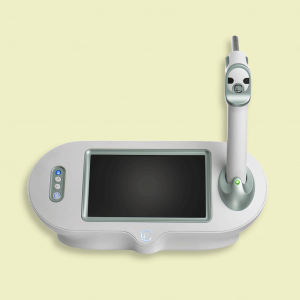| Nano Hesgar Sazan Salamat Arya |

| No Title | 1.8 MB |
| Registration Date | 16 Jan 2022 |
| Revision Date | 16 Jan 2022 |
| Share |
Medicine Medical Supplies
Cancer Diagnostic Probe
Checking the cavity-side margins during surgery for breast cancer patients is critical to ensure the definitive removal of suspicious and high-risk lesions with minimal damage to normal tissue. Remaining cancer cells in the breast causes re-surgeries and inevitable post-surgical treatments, which will have several side effects. Frozen pathology of tumor margins during surgery is a clinically accepted procedure to guide the surgeon to any need for re-excision. However, the time-consuming and expert dependent process of margin examination and false diagnostics, especially in neoadjuvant cases, are limitations of this procedure. The CDP (Cancer Diagnosis Probe) system, developed for the first time globally, is based on the real-time electrochemical measurement of the hypoxia glycolysis metabolism in pre-cancerous and cancerous lesions in cavity side margins during the surgery. This system with US patent ID (Pub. No .: US 2018/0299401 A1, Pub. Date: Oct. 18, 2018), license number 23212882, and license of the Ministry of Health has been introduced as a surgical assistant system in breast cancer surgery. The new system reveals the cancerous cells in the internal margins (cavity-side margin) within a few millimeters in 40 seconds, using a needle sensor. This system has a clinical diagnostic classification matching with the pathological results of the tested tissues. The CDP response peaks are based on the classification of the pathological system (Ductal intraepithelial neoplasia (DIN), Lobular intraepithelial neoplasia (LIN), and Fibro epithelial lesion (FEL) (according to the latest reported revisions)). The distinctive ability of CDP to detect cancer cells in the internal margins (after tumor dissection) during surgery has been obtained for more than 1000 clinical breast margin samples with sensitivity and selectivity of 97% and 94%, respectively. This achievement marks the beginning of the introduction of electrotechnical onco-surgery in the clinical field.